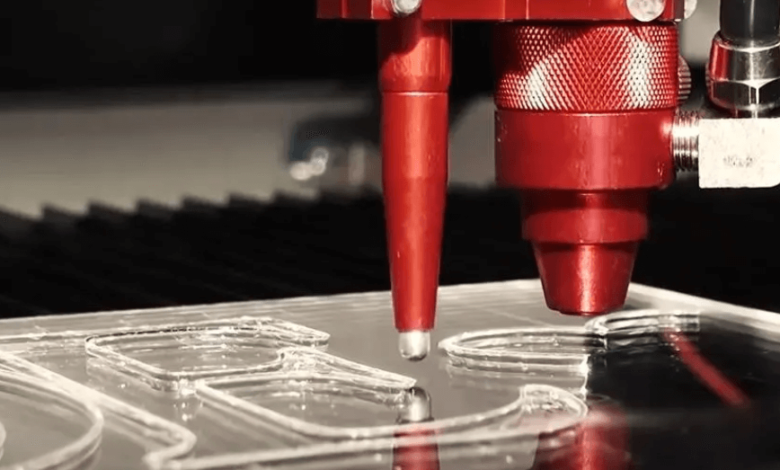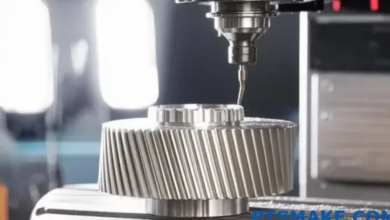What is the Difference Between Engraving and Steel Stamping?

You pick up a metal tag and run your fingers over it. On one, the letters press into the metal so you can feel every line clearly. On the other, the letters are very small and light, almost like someone wrote them by hand. Both tags are metal, and both have marks, but the way the marks were made, and the story behind them, is completely different.
Steel Stamping
Steel stamping works by pressing a die into metal to create letters or designs. It doesn’t cut the material; it just pushes it down to leave a clear, permanent mark. The process is simple, quick, and very effective, especially when you need a lot of identical pieces.
Here’s why steel stamping is useful:
- Perfect for large batches: Once the die is ready, you can make hundreds or even thousands of the same tags, plates, or labels. If you need a lot of them, stamping handles it easily.
- Durable results: The marks stay clear even when the item gets a lot of wear and tear. They hold up on tools, machinery, or anything that gets used outdoors.
- Simple and readable designs: Stamping works best with bold letters and clean logos. It’s not for intricate details, but it makes sure every mark is easy to read and consistent.
Some examples where stamping is the best choice:
- Serial numbers on factory equipment
- Nameplates for heavy machinery
- Bulk orders of dog tags or keychain plates
Engraving
Engraving is a whole different approach from steel stamping. Instead of pressing into the metal, it actually carves into it. That way, you can make letters, designs, or patterns that feel precise and carefully made. It takes more time than stamping, but that’s what gives it a personal look.
Here’s why people love engraving:
- Tiny details that pop: You can make small letters, cute logos, or fancy patterns. When you run your fingers over it, you can actually feel the grooves. It just feels special.
- Works on almost anything: Metal, wood, acrylic, glass, you name it. Engraving isn’t picky, so you can try it on a variety of surfaces.
- Feels personal: A wedding ring, a trophy, or a gift plaque instantly feels meaningful when engraved. It’s like the item is saying, “I was made just for you.”
- Stays looking good: Engraving lasts a long time. The design doesn’t rub off or fade, so your piece keeps its look for years.
- Looks fancy without being extra: Even simple shapes or letters look neat and classy when engraved.
Best Uses for Engraving:
- Personal gifts
- Trophies and awards
- Collectibles or limited items
See also: Logitech MX Master 4 Debuts as World’s First Haptic Feedback Mouse
Side-by-Side Comparison
Consider a set of dog tags to get a better idea. On one hand, you have steel stamped tags. These are strong, easy to read, and made to last. They can handle rough use, like a dog that loves running through mud or playing outside. You don’t have to worry about them wearing down quickly.
On the other hand, engraved tags are a bit different. The letters are carved in, which makes them look tidy and clear. They feel more personal and thoughtful, almost like someone put extra care into them. They might not take as much rough treatment as stamped tags, but they have a special quality that stamped ones don’t. So basically, stamped tags prioritize toughness and practicality, while engraved ones emphasize style and detail. Each has its own feel depending on what you need.
Tech Meets Tradition
These days, machines have made both steel stamping and engraving faster and more accurate. You don’t have to do everything by hand anymore, which saves time and keeps results consistent. However, even with modern tools, the primary difference between the two methods remains largely unchanged.
- With steel stamping, the process is simple: the machine presses the design into the metal over and over. It’s fast, practical, and works great when you need a lot of the same item.
- In contrast, engraving is more about shaping and carving the surface carefully. Machines can help, but it’s still a method that lets you add small details and a personal touch.
Sometimes, manufacturers even use both methods on the same product. For example, a pen might have a stamped logo so every pen looks the same, and then engraved initials to make it personal. This way, you get the consistency of stamping and the special feel of engraving together.
Pick Your Winner
Choosing between steel stamping and engraving really depends on what you want your piece to do and how it should feel.
For example:
- Need something strong and practical? Go with steel stamping. It handles rough use well, and once the setup is done, you can make lots of pieces quickly and cheaply.
- Want something personal or fancy? Engraving is the way to go. It takes more time and costs a bit more, but the details make it special.
- Need a bunch of the same thing quickly? Stamping makes it simple; everything comes out looking the same without slowing you down.
- Just doing one or two special pieces? Engraving is best suited for this, as it gives each item its own unique personality.
Check out Short Order Products today and bring your designs to life!




